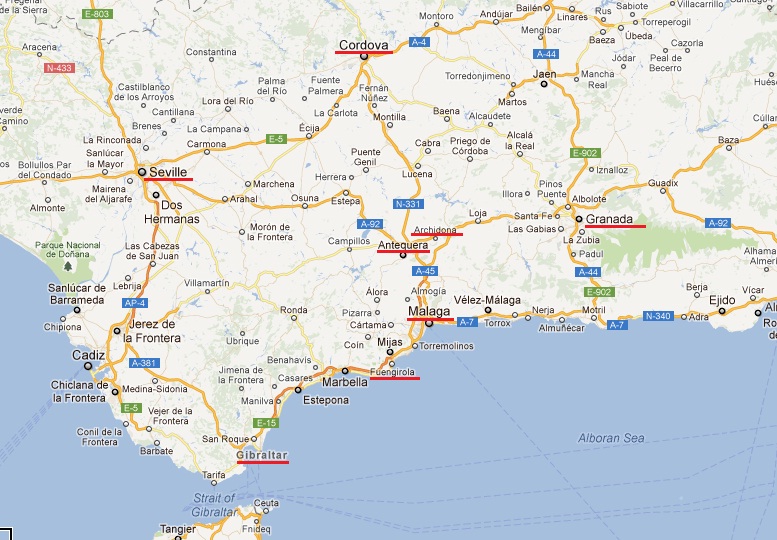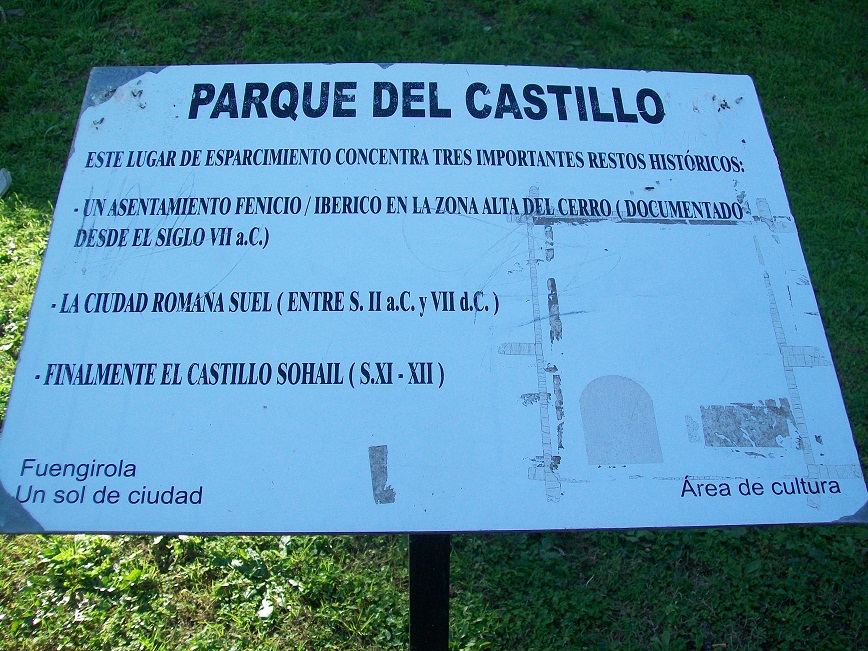
Sevilla (or Seville) had been on our list of places to go right from the beginning, primarily because both of our guidebooks identified it as the best place to hear truly authentic flamenco (w). Music lover that I am, that was a high priority for me. There was one particular flamenco show that both guidebooks highly recommended, and there was also a flamenco museum that I wanted to see.
Of course, we originally planned to make a full day of it - drive to Sevilla in the morning, see various tourist sights, go to the museum in the afternoon, have dinner, see the show, and drive back. Unfortunately, Terry started not feeling well on Wednesday, and by Thursday morning, she was well and truly sick. We discussed skipping Sevilla, but she knew how much I wanted to go, and in fact, as bad as she felt, she did want to see the flamenco too. So we decided to just stay at La Costa for the morning, and go to Sevilla in the evening, for the museum and the show.
The first thing I did that morning was to drive into Fuengirola to find a pharmacy. Terry dictated a note in Spanish, which I wrote down, and gave to the pharmacist, who gave me a bottle of cough syrup and a vial of pills, the kind that you dissolve in water. Terry and I were both quite impressed by the fact that the boxes that the medicine came in had Braille on the sides, giving the names of the medications and dosage instructions.
While Terry rested, I went out to do a little bit of sightseeing on my own. Fuengirola has a castle, which I could see from our balcony, and which I wanted to get a closer look at. It's on a hill, of course - most castles are - and at the base of the hill was this sign:

Rough translation: This park contains three important historical remains: A Phonecian/Iberian settlement at the top of the hill (from the 7th century B.C.); the Roman city Suel (from the 2nd century B.C. to the 7th century A.D.); and finally the Castle Sohail (11th to 12th centuries).
I walked up the hill to the castle entrance:
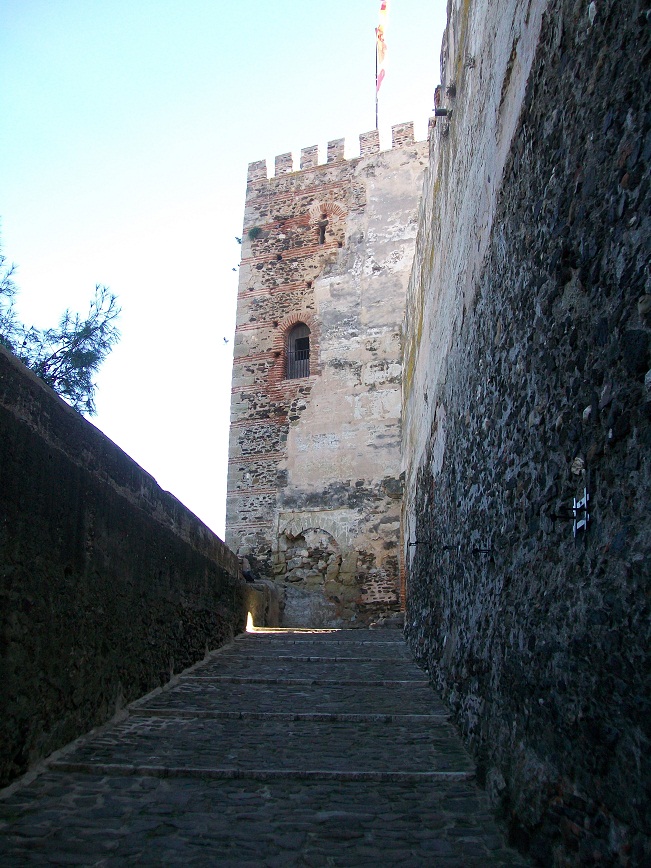
...and found that there wasn't much to the place inside. Pretty much all that are left are the exterior walls, with not much more than empty space inside. And it seems like they've attempted to turn this place into an auditorium, as well:
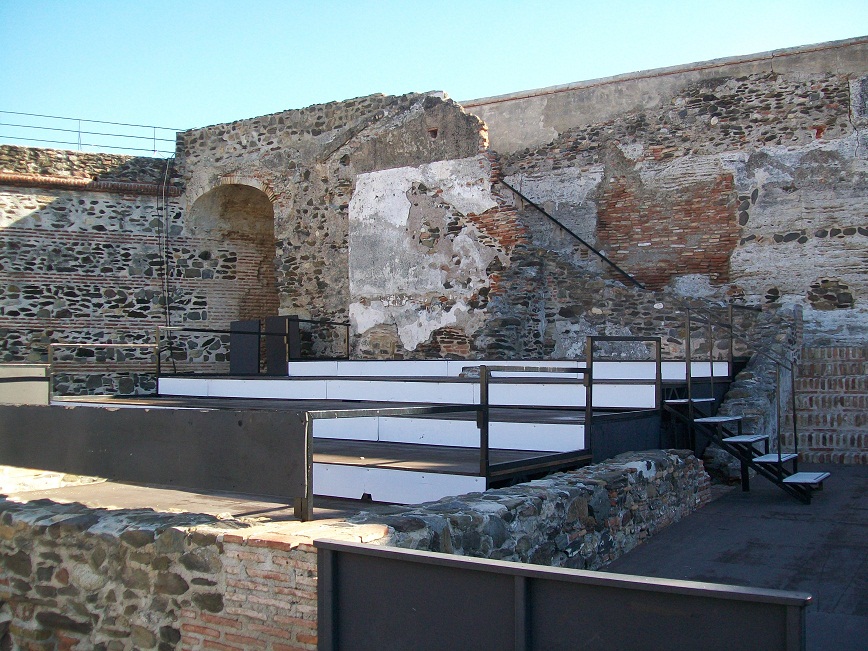

I climbed up onto the castle wall and took this picture of the park next door:
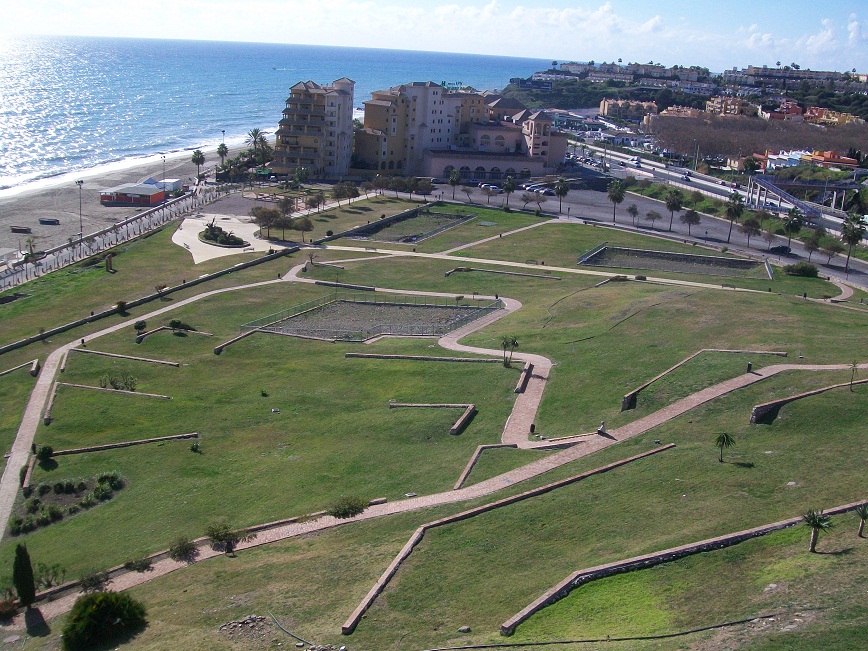
I then drove up the coast for a little bit, to where I had previously noticed a lighthouse. Unfortunately, I discovered that there was no way to get there. It's a working lighthouse, not a tourist attraction, and the only road that goes up to it is behind a locked gate.
As I've mentioned before, I've lived all my life near either the Atlantic or Pacific Oceans, and of course I've gone swimming (or splashing - I can't really swim) in both of them. I've also been in the Gulf of Mexico. But I'd never been in the Mediterranean. So I found a place to park, walked down some wooden steps to the shore, took off my shoes and socks, rolled up my pants, and waded in. I didn't wade very far, or for very long - it was January, after all, and the water was cold - but now I can say that I've been in the Mediterranean. I picked up a pretty heart-shaped white rock, and a couple of seashells - which are now sitting on the windowsill next to my desk, along with various other bits and pieces - and went back the resort.
Around 2:00, Terry dragged herself out of bed and got dressed, and we had some lunch at a nearby restaurant, and drove to Sevilla. It was a long drive, and Terry slept most of the way. When we got there, and parked the car in a parking garage, Terry told me to go ahead and go to the museum by myself, and then come back and get her. She really didn't feel well.
The cab driver was very talkative, although his English was about like my Spanish, and her kept pointing out important buildings and points of interest as we drove. He asked where I was from, and when I said California, he said "Arnold Schwarzenegger!" Then he asked "Was good?" And liberal Democrat that I am, I answered "Eh... not so good."
The driver explained, in his limited English, that he couldn't drive right up to the museum, but he let me off a couple of blocks away, and I walked the rest of the way. The museum had interesting exhibits about the history of flamenco, and the lives of various famous flamenco artists. It also had a room where an entire wall showed videos of dancers demonstrating seven distinct styles of flamenco dancing. Here are a couple of examples:
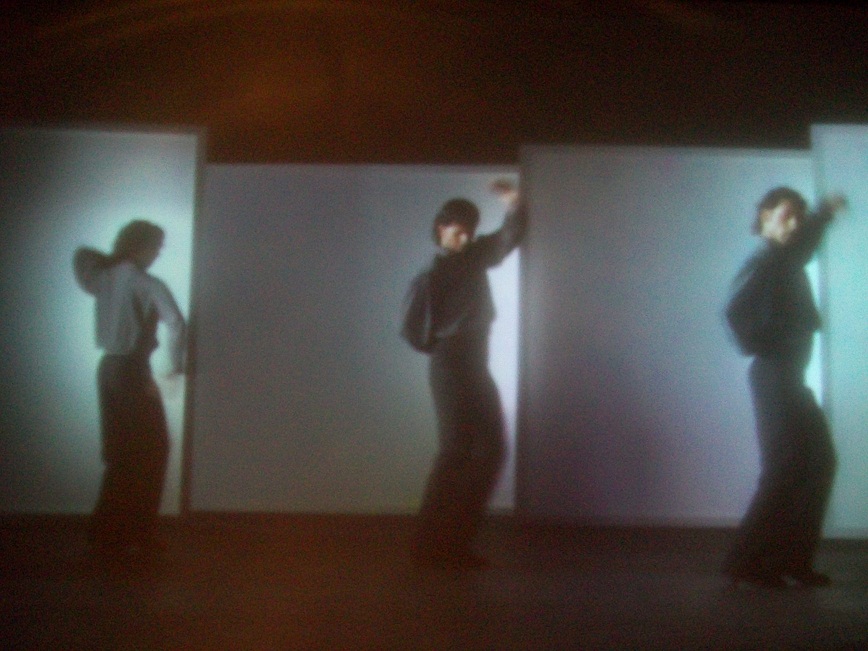
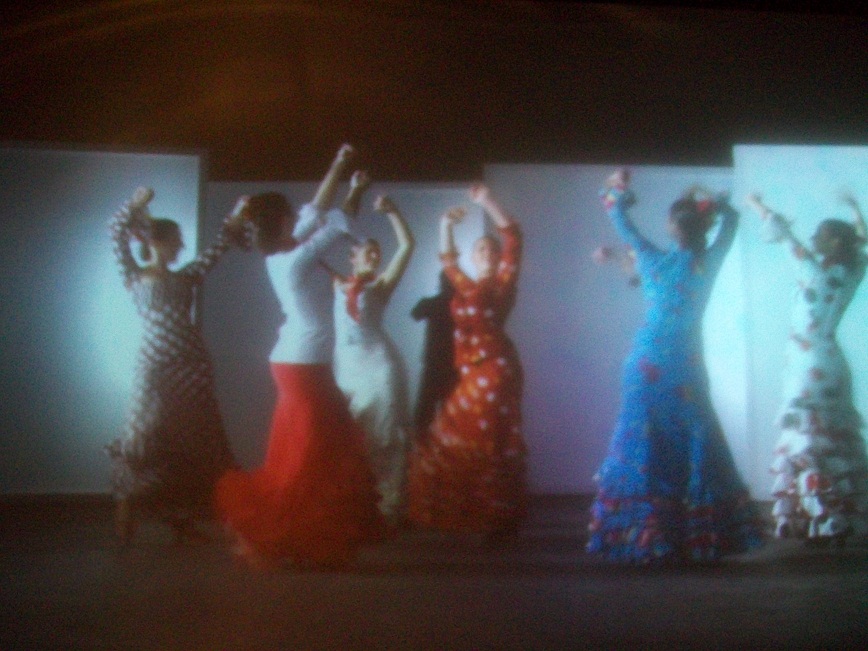
The museum had a gift shop, of course, and in keeping with my habit of buying music on my vacations, I bought two CDs of assorted flamenco music.
As I walked back from the museum, it was early evening, and the sun had just set. The guidebook had mentioned the local tradition of the evening paseo, where families come out for an evening stroll. Sure enough, I passed a park where several families, most with young children, were out paseoing:
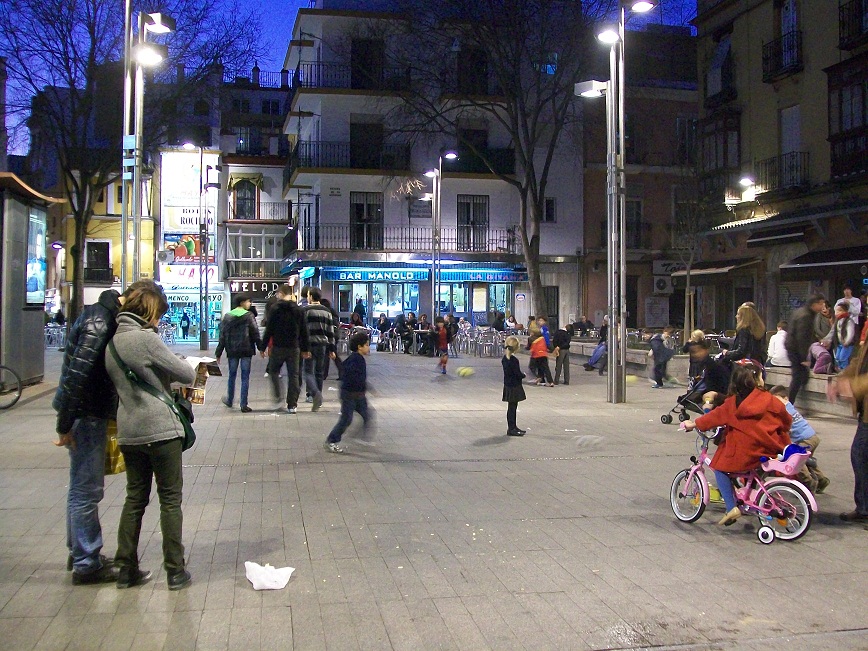
I caught a taxi back the garage and collected Terry, and we took another taxi to the Casa de la Memoria de Al-Anadalus (House of the Memory of Al-Andalus), where we bought our tickets for the show. As we drove, I was interested to notice that we drove right past the museum, which the first driver had claimed he couldn't drive to. Maybe he had a larger car - the streets were quite narrow.
The show didn't start until 10:30, so we had plenty of time for dinner. We walked up the street and found a place called Las Teresas, on Calle Santa Teresa:
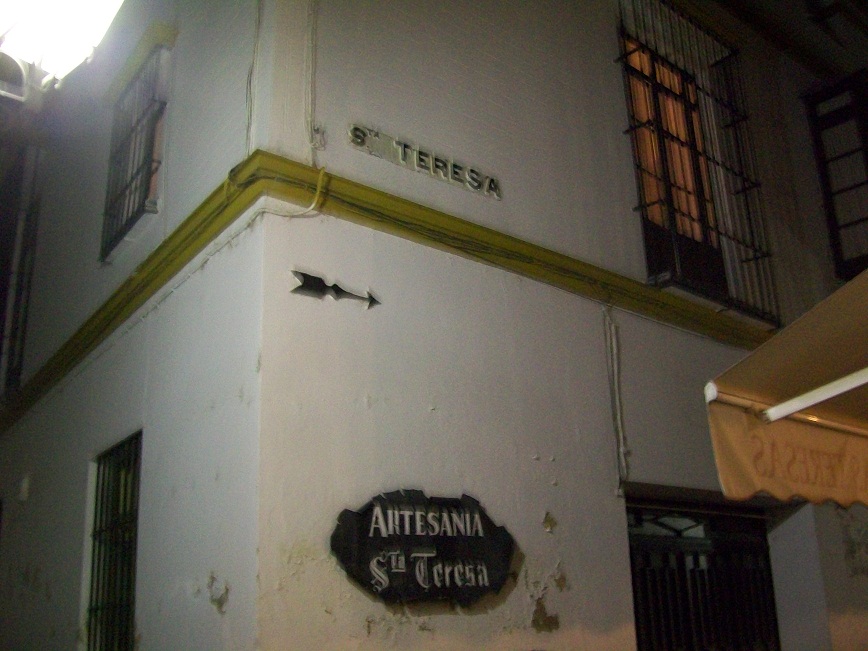
Calle Santa Teresa

Teresa at Las Teresas
After dinner, and after several cups of tea with brandy, Terry felt a little better. We still had a little time, so we walked a little further and found another restaurant, Altamira, where we stopped for dessert. You may remember that a few days earlier, we had gone into a restaurant and tried to order dessert, and been rather rudely rebuffed. We were wondering if it was a cultural thing - maybe that's something that's Just Not Done in Spain. But at this place, there was no trouble - when we told the waiter about our earlier experience, he laughed.
When we got back to the Casa de la Memoria, we were the first ones there, so we got a seat right in front. Actually, there were only two rows of seats, on three sides of a bare wooden stage with three plain wooden chairs. Shortly after we sat down, the place started to fill up - with Americans. Apparently, there was a group of American students in Spain on an exchange program, and tonight was the night they were going out to see a flamenco show. Besides ourselves, the only ones in the audience that weren't American students was a couple sitting next to us, who were from Finland!
The show was wonderful. I understand that some shows are more touristy, and some are more elaborate. This one was very basic - one singer, one guitarist, and two dancers, one male and one female. According to the Wikipedia article, there are four basic elements of flamenco, all of which were well represented in this show - guitar, singing, dancing and handclaps.
Handclaps? That's right. In addition to the guitar, the singer was accompanied by himself and one of the dancers (whichever one wasn't dancing), who provided a complex rhythmic backdrop to the singing by clapping their hands and stomping their feet. The singing was quite emotional, and the wailing voice clearly showed the Moorish influence. Of course, I couldn't understand the words, but Terry told me that one representative phrase was something like "I wish with all my heart that the Lord had never placed me in your path." Apparently, much flamenco singing is concerned with similar cheerful subjects.
The guitar playing and dancing were equally impressive. The female dancer, in particular, was very intense. At times her dancing would be slow and controlled, but with an intensity that reminded you of a tightly coiled spring - and then she would explode into a frenzy of motion. The male dancer was less intense, but did more of the foot-stomping type of dancing that you usually associate with flamenco. At one point, his tapping got faster and faster, until the taps were so close together that they almost blended into one continuous sound. When Terry said "Wow!" I told her "Terry - he's doing that with one foot!"
Watching the man dance, it occurred to me that the connection between Spanish Flamenco and American tap dancing is obvious. Except that tap dance is a more light-hearted form. You might say that Flamenco is the grand opera, and tap dancing is the Broadway musical.
The only problem with the show was the audience. According to the guidebook, the audience at a flamenco show frequently gets into the act, "clapping along and egging on the dancers with whoops and shouts." But this audience didn't know about that, and just sat and watched and listened politely, applauding at appropriate moments. I tried to throw in a few Ole!'s, but it was awkward being the only one.
At the beginning of the show, we were requested - in Spanish and English - not to take any pictures during the show, but we were told that we could take pictures during the last five minutes. So when they announced "Pictures!" I grabbed my camera:
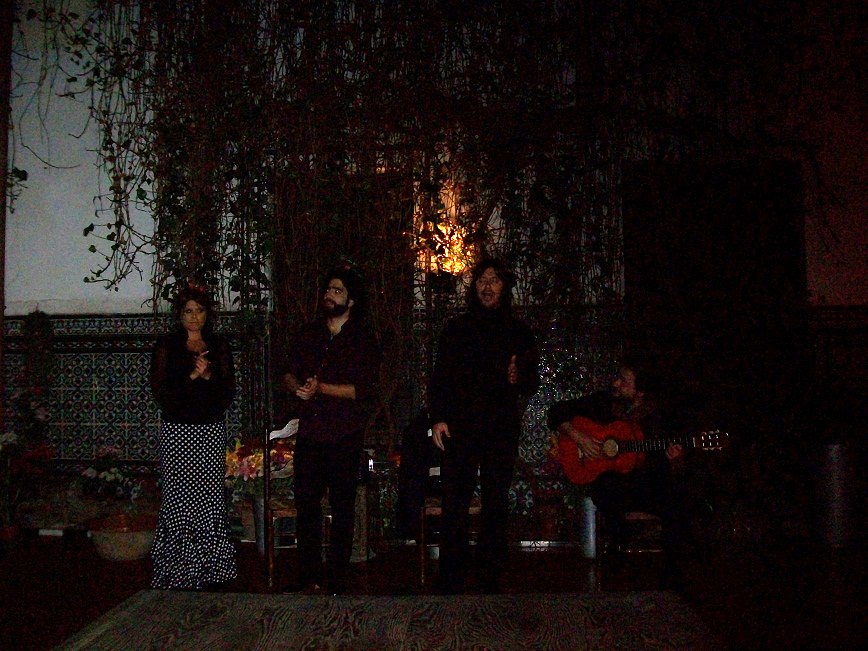
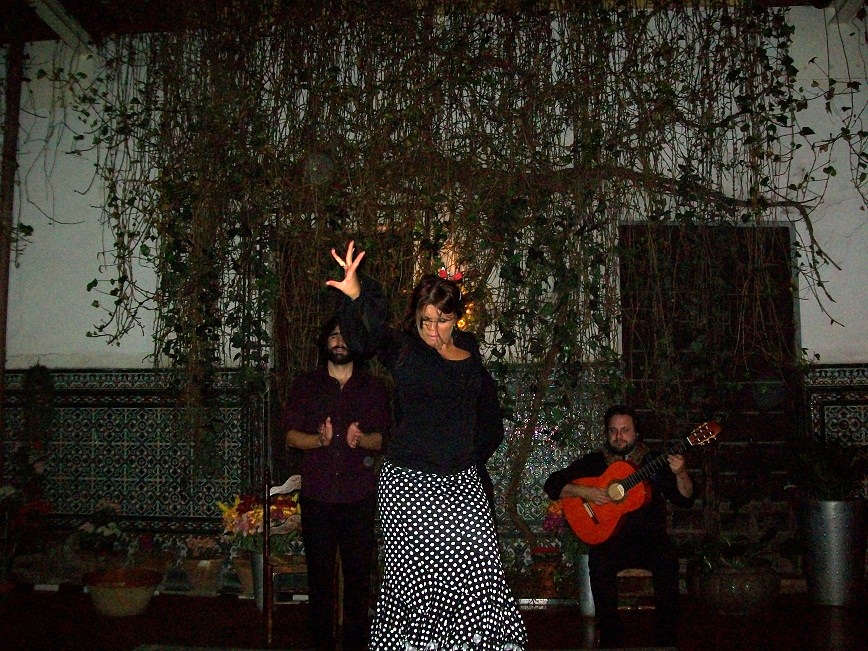
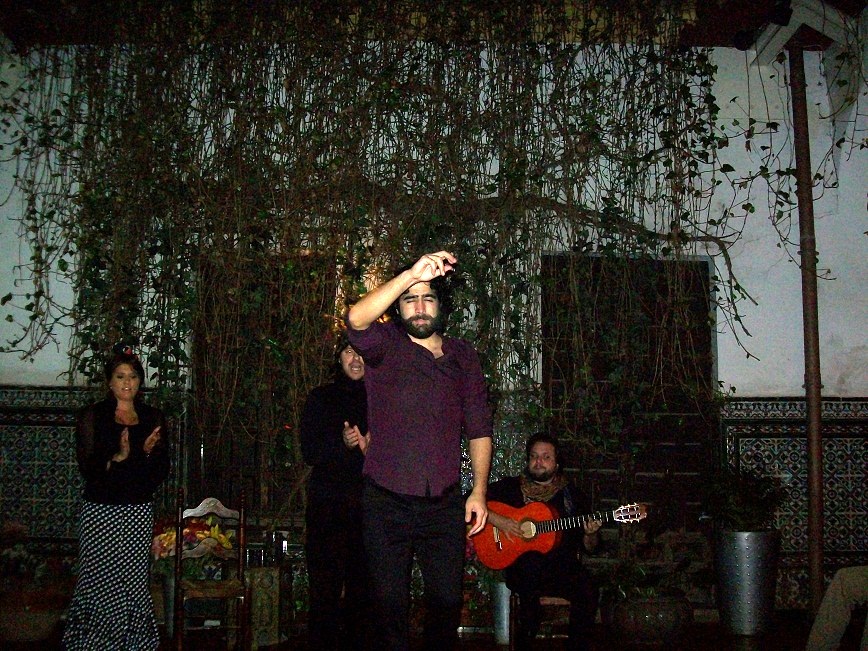
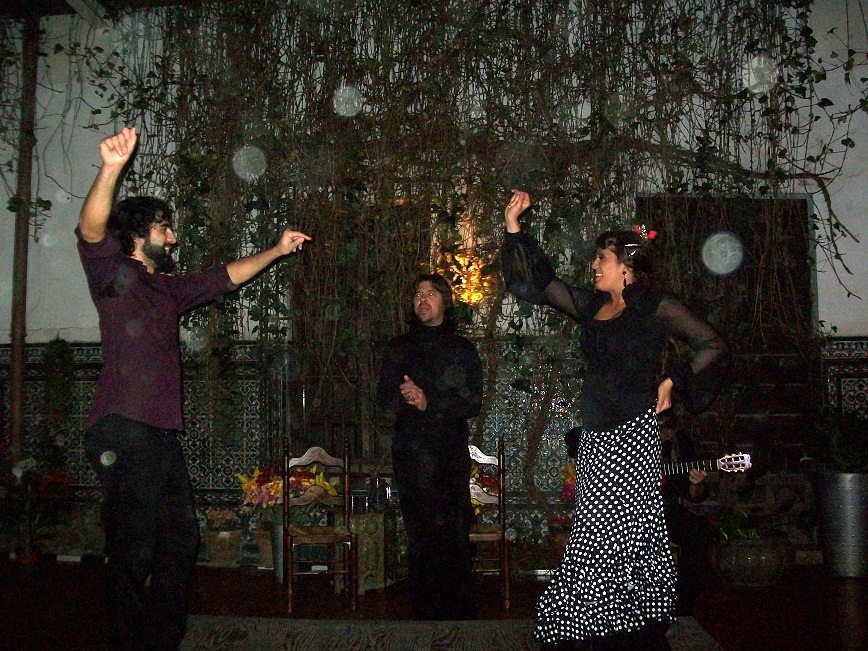
A most enjoyable experience, all in all. The only one who didn't really appreciate the show was Trooper:
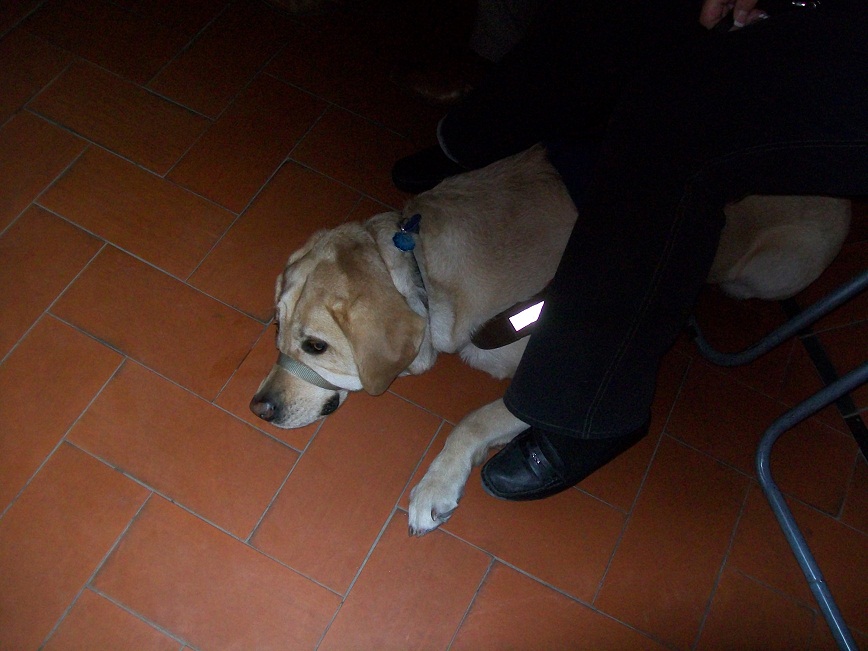
Once or twice, when the dancing got particularly close to the front of the stage, he tried to jump up, but Terry pulled him back down.
It was nearly midnight by the time we got back to the car. On the way back, we listened to both of the flamenco CDs I had bought at the museum. By the time we got to bed, it was nearly 3:00 AM!
We haven't had any maps for a while - here's one showing all the places we went so far this week:
